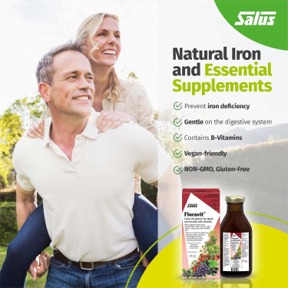
Understanding the OAT Axis & Hormone Balance
Share

We understand that hormones can wreak havoc on the body if they are out of balance, negatively affecting our energy, mood, sleep, metabolism etc. And when any of these hormonal systems are misfiring, prescribed medications or supplements are recommended to help bring the body into a state of equilibrium. None of this is new information. What is more intriguing is the recognition that hormones and endocrine glands (where hormones are stored, released and produced) have more intimate connections than previously understood.
Besides hormones, the endocrine system manages the body's processes that support growth and development, stress and sleep, and balance blood sugar and metabolism. Michael Lam MD was the first to coin the intricate relationship between three of the endocrine's main functions as the OAT axis and described how the ovaries, adrenal glands and thyroid gland influence one another.
The endocrine system is made up of eight different glands located throughout the body. The three most important systems that affect women are the ovaries, the adrenal glands and the thyroid gland.
O = Ovaries A= Adrenals T = Thyroid = OAT Axis ( the imaginary line that connects & rotates around the body)
The OAT Axis
The theory behind the OAT axis is that all three systems of this axis must be in a state of optimum balance for women to feel their best. In other words, the systems depend on one another, and what happens in one organ can affect the other. If the adrenal glands are weak or stressed, there is often some disruption to the thyroid glands and a woman's ovarian glands. Subsequently, if the thyroid hormones are misfiring, the ovaries and the adrenals are affected. When the ovaries are under or over-performing, adverse effects on the adrenals and thyroid may arise. The OAT axis imbalance represents a hormonal imbalance that conventional medicine has not yet recognized. No clinical test can definitively test or isolate precisely which one of the organs is in a state of imbalance. However, there is enough anecdotal evidence to examine the relationship between these organs and the need to support each organ and its role in whole-body function and wellness.
Do you have an imbalanced OAT axis?
- Adrenal fatigue
- Unexplained anxiety or depression
- Chronic fatigue
- Joint pain
- Exercise intolerance
- Brain fog
- Sugar cravings
- Metabolic syndrome
- Type II diabetes
- Dry skin
- Intolerance to cold
- Slow metabolism
- Inability to lose weight
- Accumulation of fat around the waistline
- PMS
- Endometriosis
- Irregular menstrual cycle
- Fibrocystic breast disease
WOW, doesn't it feel great knowing that your symptoms make sense? And why nothing you do seems to help? While treating one system within the OAT axis will help if you are certain that the system is causing the disruptive imbalance. However, the myriad of symptoms overlap each system and cause imbalances at different degrees with different women, making it both convoluted to sort out and challenging to treat.

What systems are causing this disruption!!!!
It is not just adrenal fatigue! It is not just hypothyroidism! It is not just ovarian function! It could be all three!
If your healthcare providers are unsure what systemic disruption came first, the thyroid, the ovaries or the adrenals treating all three systems seems to make more sense! Unfortunately, no one prescribed pill or even a supplement has caught up to the new theory.

So what can you do?
If you want to work on normalizing your OAT axis, the suggestion is to first start with recovery of the adrenal gland. The adrenal glands manage daily stress, and to have a whole-body hormonal balance, the adrenal glands need to function optimally. The adrenal glands are also the cornerstone for hormonal balance because it is where "pregnenolone" is produced. Pregnenolone is what other hormones are made of (estrogen, progesterone, testosterone, cortisol, and DHEA). If the adrenal glands are under a constant state of stress, the increasing need for cortisol rises to handle the bombardment of stress signals. The chemical exchange that takes place in your adrenals most often affects pregnenolone which starts the disruption and imbalance of your endocrine hormones, and organs, especially the thyroid and ovaries.
By supporting your adrenal function, you can improve the communication of the entire OAT system, and many of your symptoms may naturally fall in line. If you find that supporting your adrenal glands does not alter the state of your thyroid or ovaries, systematically introduce methods and supplements to help each system.
Recovering from an OAT axis system breakdown is not a quick fix. It took a while for these hormones and organs to become imbalanced, and it will take equally as long to bring them back to equilibrium.
The Adrenal Glands
- Consuming a whole-food diet with ample protein, healthy fats, and fruits and vegetables
- Manage your internal stress response with key vitamins and minerals such as Active B Complex, BioCoenzymatic Vitamin B5 (Pantehine) and Regenerlilfe Liposomal Vitamin C
- Follow a consistent sleep routine for a good night's rest, or use supportive supplements to help with your sleeping disorders.
- If you are struggling with sleep, consider a herbal supplement. The herbs in formulas such as Stress-Relax® Nighttime Magnesium Bisglycinate are non-habit forming and will not chemically alter hormonal systems.
- Supplement key adrenal herbal adaptogens (ashwagandha or rhodiola) to manage cortisol production in the adrenal glands.
- Taking several adaptogenic herbs daily can feel overwhelming, so you may want to opt for a full-spectrum adrenal supplement such as WOMENSENSE - AdrenaSense
The Thyroid Gland –If you have been diagnosed with a low thyroid but are not taking medications for the condition. Consider adding a thyroid-supportive supplement in combination with your adrenal healing routine. Otherwise, wait to start this supplement. Work on your adrenal for 3-6 months. If you have not seen any changes with the symptoms in your OAT axis, then add thyroid support to your routine
- Consume healthy fats ( omega 3 from fish) or Omega 3 supplements
- Eat raw goitrogenic foods in moderation (broccoli, kale, cabbage, cauliflower)
- Avoid thyroid-disrupting chemicals (PCBs, phthalates, toxic metals)
- Ensure adequate intake of thyroid-supporting nutrients ( iodine, kelp, selenium, vitamin D)
- Supplement with a full-spectrum Thyroid supplement such as WOMENSENSE - ThyroSense
The Ovaries –If you are not experiencing symptoms identified with the OAT axis supporting the ovaries and women's hormonal system should be the first place to start ( PMS, Perimenopause, Menopause). However, if you can check off, most of the OAT axis symptoms work on the adrenals first.
- Increase your consumption of liver-supporting foods and herbs (beets, dandelion, milk thistle)
- Support estrogen metabolism with indole-3-carbinol ( brussel sprouts, cabbage, collards, kale, mustard greens, & turnips)
- Consume fibre and probiotics for gut health
- Supplement with full spectrum hormone adaptive supplement such as WOMMENSENSE Estrosense during child-bearing years or WOMENSENSE MenoSense during the cycles of menopause
If you are unsure where to start, work with your healthcare practitioner or a naturopathic doctor to help evaluate and solve ovarian, adrenal and thyroid concerns.
Men are not immune! – Men can have hormonal imbalances; substitute the ovaries with the male reproductive system!






